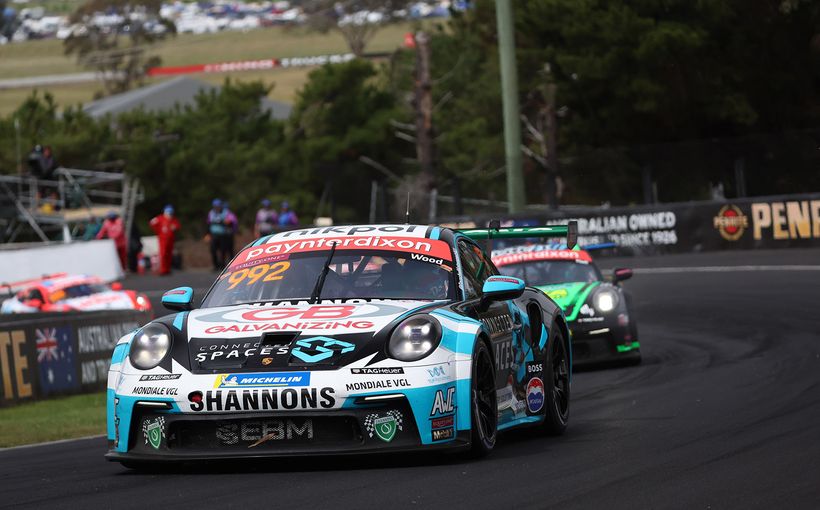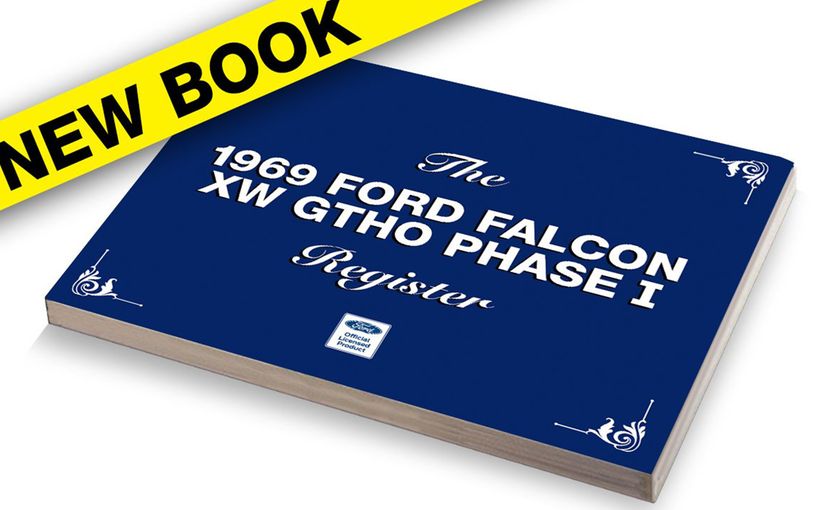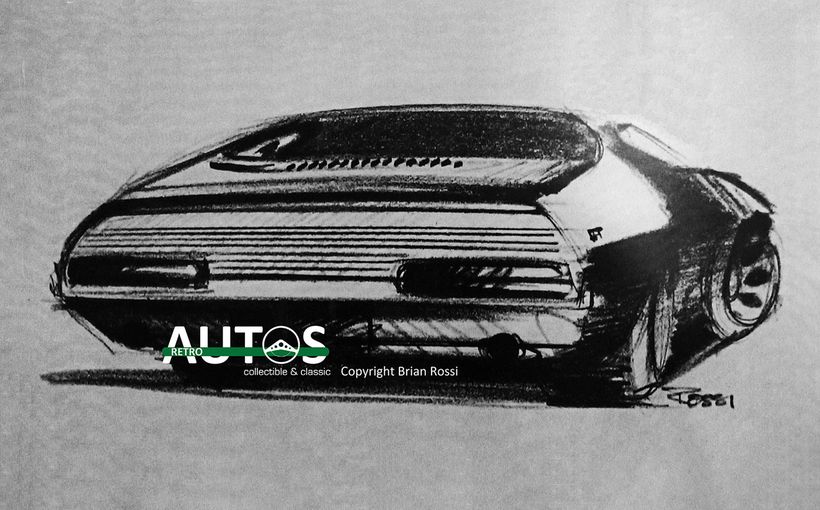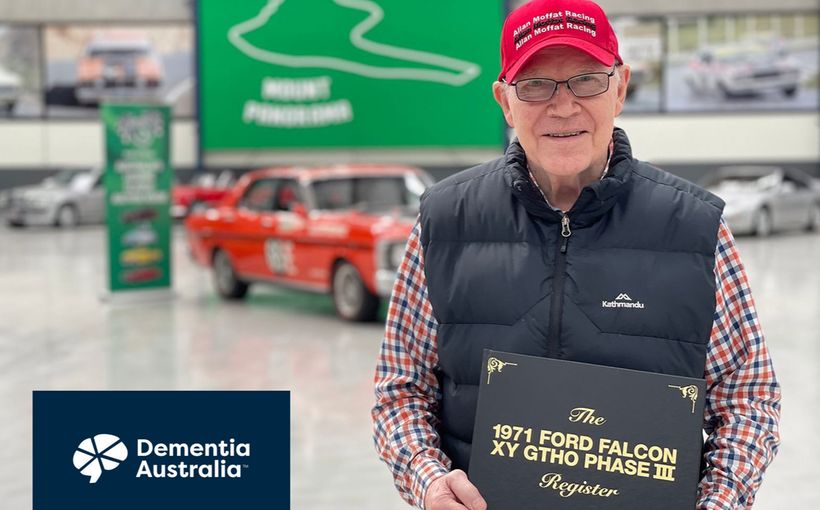Ford XK-XL Falcons: From East African Safari to Ford’s first ‘Great Race’ win

Hard to believe today, but the heritage of Ford’s mightiest V8 Bathurst Falcons can be traced back to the original six cylinder XK model, seen here powering through Hell Corner during practice for the 1962 Bathurst Six-Hour race. Drivers Harry Firth and Bob Jane were fastest in their class until brake troubles resulted in a spectacular exit.
Ford’s Bathurst 500 history is largely built on the legend of the Falcon GT and GT-HO. But long before those iconic V8 muscle cars existed, the humble six cylinder XL Falcon wrote its own vital chapter in Great Race history by winning the 1962 Armstrong 500 at Phillip Island.
At the time, Falcon sales were suffering because of suspension and other durability issues that emerged with the XL’s predecessor and Australia’s first Falcon – the XK. After initial strong sales, private and fleet buyers had abandoned the Falcon in droves, as word of its problems spread like a virus and dominant market leader Holden capitalised on the fall-out.
Ford quickly rectified those early mechanical failings but the damage to the Falcon’s reputation would not be so easily repaired, as perceptions that the US-designed Falcon wasn’t tough enough for Australian roads became deeply engrained.
Automotive history is dotted with pivotal moments when struggling car companies turned their fortunes around by getting the right people at the right time. In Ford Australia’s case, the arrival of Harry Firth brought several of those people in one pair of shoes.
And his timing could not have been better, as Ford committed to a rallying and racing program that required lots of winning to help turn around negative perceptions of the embattled Falcon.

Harry Firth was in his element during the 1960s and ‘70s, particularly in rallying and touring car racing. Here ‘The Fox’ (so nicknamed because of his cunning ways) is at Phillip Island with the Mercedes Benz 220SE he drove to victory in the 1961 Armstrong 500 with Bob Jane. Harry’s three other Great Race wins were in Fords.
As a self-taught mechanic, engineer, driver and master tactician, Firth had built a reputation in local motor sport circles as a one-stop-shop. He started working with Ford in 1961 as a specialist tuner/driver, initially on a freelance basis under the direction of competitions manager Les Powell.
It would prove to be a successful partnership, with Powell handling the day-to-day corporate politics and responsibilities at Ford HQ leaving Firth (who quickly went from freelancer to contractor) free to concentrate on what he did best – building and driving winning race and rally cars.
Harry’s broad input would bring great success to Ford in the 1960s. This included four Bathurst 500 wins, the 1964 Ampol Trial, 1968 Australian Rally Championship and the prestigious Team’s Prize for Australia in the 1968 London-Sydney Marathon to name a few.
Harry also played a pivotal role in the success of Ford’s history-making XP Falcon 70,000-mile Durability Run in 1965, which finally erased any lingering doubts about the Falcon’s toughness and ensured the survival of not only Falcon but Ford Australia.
In 1962 the motor sport program shifted up a gear. It started early in the year with an ambitious assault on the world famous East African Safari and ended with outright victory in Australia’s biggest and most important touring car race.

Given Ford Australia’s big commitment in tackling the 1962 East African Safari with a team of XK Falcons, it’s surprising that quality photographic coverage wasn’t included in the deal. Even Harry didn’t have any photos. These images are screen freezes taken from corporate movie footage shot at the time, which provide some insight into the logistics and preparation involved. Images: Chevron Publishing
1962 East African Safari
Ford was active with its new XK Falcon in local rally events in the early 1960s. The company’s factory-backed campaign supported not only Falcons but also 105E Anglias, Mk I/Mk II Zephyrs and by 1963 the new Cortina Mk I.
This was long before the establishment of the Australian Rally Championship, so efforts were focused on major state championship events mostly in NSW and Victoria. The Falcons did well, but competitions boss Les Powell had international success in mind.
One of Firth’s first tasks was to oversee local preparation of five XK Falcons for the 1962 East African Safari in April. Widely regarded as the world’s toughest annual car rally, the gruelling 5,000 km Safari was based in Niarobi, Kenya with long car-destroying loops into neighbouring Uganda and Tanzania.
Driving conditions were merciless with extreme contrasts; roaming wildlife, baking hot sun and blinding dust to torrential rains, flash floods and thick car-bogging mud. The Safari was hell on wheels, so success for the Aussie Falcons would pay big dividends back home.

The Aussie Falcons did it tough in East Africa. Despite Firth’s best attempts to prepare the cars to conquer one of the world’s harshest continents, there was a limit to what could be achieved and what result could be expected. Note the hefty sump guard, extra driving lights and mudflaps. Images: Chevron Publishing
Although Harry Firth is no longer with us, his fascinating career has been largely documented in the form of personal memoirs. These include his time with Ford Australia in the 1960s, with his East African experiences immortalised by Australian Muscle Car magazine:
“Ford wanted to get into competition to prove its car, the Falcon, was capable of handling it,” Harry explained. “That was the whole reason they did the East African Safari. But that first XK Falcon – 144 cubic inch (2.4 litre/90bhp) engine, three-speed gearbox – was really a terrible car.
“You could do very little with the engine, the body flexed heavily and it had sloppy springs – all you could do was just set the Armstrong shockers rock hard. The brakes were just adequate with race linings and the front hubs broke under race conditions. The steering had 5.5 turns lock to lock – impossible for racing.
“We made and tested the five Falcons and sent them off to Africa. We fixed the hubs, made stronger wheels and did some work on the rear axle shafts and the gearbox. Even then the cars were very fragile.
“It was the worst car you could ever imagine to take into an event like that. We had to virtually carry them around on our backs. We said to ourselves, ‘we’re not going to break it – if we think it’s too hard on the car, then we’ll back off.’

Ford achieved some good results with the early model Falcons in local rallying, including outright victories in the gruelling BP Rally (as seen here) and Akedemos Trial. Ford exploited these results in national advertising, as it tried to change perceptions that the Falcon was not tough enough for Australian conditions. Rallying also helped Ford engineers to develop tougher chassis and components in production.
Les Powell had travelled to East Africa several months before the Safari to conduct a thorough survey and was confident the new Falcons could do well. And they did, initially, before dropping like flies. Two left the road, with one hitting a large rock and the other becoming hopelessly bogged. Another jammed in gear while the fourth actually finished but was excluded due to exceeding its late-time limit. Firth’s was the only Aussie Falcon to finish.
“Graham Hoinville (navigator) and I were placed seventh only 300 miles from the finish when we broke a main rear spring plate in a competitive section,” he said. “That dropped us back to 16th but we still finished 25 minutes ahead of the English factory Fords.
“Out of that event I was offered positions by three works rally teams but did not take any of the offers because Ford (Australia) said we can do better next year, but then they changed their mind and didn’t go back the next year like they had agreed.
“The way the cars performed earned me a contract with Ford for competition. This was really the start of my association with Ford and the first step into ‘The Big Time’ – although I was still doing work for others.”

The 1962 Bathurst Six-Hour for production sedans and sports cars provided valuable Falcon track time for Firth and Jane prior to their debut as Ford works drivers in the Armstrong 500 at Phillip Island. Here the Firth/Jane XK Falcon is leading one of several MGAs through Hell Corner early in the race, which was won by Leo and Pete Geoghegan in a V8-powered Daimler SP250 sports car.
1962 Bathurst Six Hour
With Victoria’s Phillip Island circuit falling into disrepair, a new home for the annual Armstrong 500 production car race was urgently needed. The solution was to be found in regional New South Wales, on the Mount Panorama road course at the historic gold-mining city of Bathurst.
The Sydney-based Australian Racing Drivers Club (ARDC) was keen to take over the running of the event from the Phillip Island Auto Racing Club (PIARC), so the successful staging of a six-hour endurance race for production sedans and sports cars at the Mountain in September 1962 was a great way to prove the club’s – and the circuit’s – credentials for hosting the Armstrong 500 the following year.
Ford was planning to enter two of its new XL Falcons with the more powerful 170cid (2.8 litre/101bhp) ‘Pursuit’ engines in the Armstrong 500 at the Island, so it viewed the Bathurst Six Hour as a good opportunity for Firth and co-driver Bob Jane to get in some valuable racing miles beforehand. However, Ford was not ready to role the dice with the latest Falcons, so Firth and Jane had to drive the XK.
“Having not been to Bathurst for some years, I had to rely on hearsay info like ‘no, it is not hard on brakes’ and ‘the circuit has not changed’,” Harry recalled. “I did the usual things such as a valve grind, compression check, set the camshaft properly, gave the pistons plenty of clearance, deck-heighted the head and put the engine on a dyno.

Firth made a spectacular exit from the 1962 Bathurst Six-Hour after chronic brake problems caused his Falcon to topple onto its roof at the aptly named Hell Corner on lap 38. Here the remains of the car can be seen dumped to the side of the Hell Corner escape road, where it sat for the remainder of the race. The inset image shows how heavily the roof was crushed and why it took Harry a long time to extricate himself. And how lucky he was not to break his neck! Images: Chevron Publishing
“I fitted a set of heavy Armstrong shockers and some well-worn springs. I made up some Ferodo brake shoes but ended up leaving them at home, thinking they wouldn’t be needed. I drove the car to Bathurst myself. Practice proved two things; the car was the fastest sedan and the brakes were not good enough.”
Although the Firth/Jane XK Falcon led its class early in the race, the brake pedal was getting closer and closer to the floor. Following their first scheduled pit stop, Firth took over from Jane but was struggling with the car’s deteriorating four-wheel drums.
As he braked for Hell Corner, the fronts suddenly over-energised and locked on, the nose dug in and the car rolled. The roof was severely crushed and Firth was lucky to escape through the car’s back window, as petrol spilt all over the road. Fortunately, it did not ignite.
“Our race was over,” a shaken Firth lamented. “I just kept thinking about the special brake linings I’d left at home and the lesson I’d just learned that you should never listen to ‘experts’.”

The XL Falcon 170 Pursuit that won the 1962 Armstrong 500 outright may not look glamorous (note mismatched wheels) but its winning performance is legendary. Firth and Jane completed the 167 laps in 8.0 hrs 15 mins 16 secs at an average speed of 60.57mph (97.5 km/h). That was very fast motoring given that they were racing on what was by then a demolition site. Note how Jane is 'threading the needle' between a large pothole on the left of the car and loose gravel on the right.
1962 Armstrong 500
Harry Firth’s Great Race debut as a Ford works driver came less than a month after his nerve-racking exit from the Bathurst Six Hour. The 1962 Armstrong 500 in October, the last to be held at the crumbling Phillip Island, also marked the first official entries from the Ford Motor Company of Australia.
The third and final running of the race at the Island attracted a tremendous field of cars and drivers. The previous year’s economic recession had eased, car sales were rebounding strongly and the car makers and their dealers had regained confidence.
This was reflected in the big 41-car entry list, boasting 18 different models from the total of 28 that were eligible. The four-class structure remained, but the cars were now grouped according to their retail prices rather than engine capacities: Class D (under £900), Class C (£901-1050), Class B (£1051-1240) and Class A (£1251-2000).
Ford entered two of its new 170 Pursuit XL Falcons in Class B. One was to be crewed by reigning Armstrong 500 champions Firth and Jane who had won the 1961 race in a Mercedes Benz 220SE.
A second works car was shared by Ken Harper, John Reaburn and Syd Fisher. Three more XL Falcon 170 Pursuits were private entries, with the only other Class B entrants being a lone EJ Holden and two Austin Freeways which come the race would pose no major threat to the Ford pack.
It’s timely to point out here that privately-entered Falcons had competed in the race since its inception. In 1960, two XKs took part, with one entered by Bob Jane’s Autoland dealership and shared by Jane and hotelier Lou Molina. The other was backed by Wangaratta Motors for Ernie Seeliger and Australian TT winner Ron Phillips.

Lou Molina (or is that Clark Gable?) was lucky to get away without terminal damage to this XK Falcon after a high speed roll-over in the first Armstrong 500 at Phillip Island in 1960. Before the accident Molina and co-driver Bob Jane, who supplied the car through his Autoland dealership, were running second outright to the winning Vauxhall Cresta. Not sure if this one ‘only driven on Sundays’ ended up back on the Autoland lot.
The new Falcons were competitive, but they had a tough day. The Jane/Molina XK was running second in class and second outright behind the winning Vauxhall Cresta until Molina lost control and rolled it. With the roof badly deranged and windscreen missing, the scrutineers still allowed the car to complete the race. The Phillips/Seelinger XK retired early with an overheating engine.
Only one XK Falcon fronted in 1961 shared by Ken Harper, John Reaburn and Syd Fisher – the same trio assigned to the second XL works car in ’62. Although widely suspected of being a pseudo works entry, the XK engaged in a heated class battle with an EK Holden - the first example of ‘Australia’s own car’ to take part.
The Holden crew was leading the Falcon boys until the EK lost a wheel. It was later disqualified because they cannibalised parts from another car (rather than use their pit supplies) to get it back into the race. The Falcon plugged on to finish a respectable second in class and seventh outright, behind the class and outright-winning Mercedes.
For 1962, the pressure was on. With Ford taking a step up as a factory entrant with a marketing strategy to be built around the race result, anything less than a class win and hopefully an outright victory (even though there was no award for first-across-the-line honours in those days) for Falcon would have been a failure.
“After the East African Safari, Ford decided we should race the new XL Falcon Pursuit (released in August 1962), “Firth recalled. “The model as supplied to the police – larger engine, better wheels, but otherwise the same as the standard 144. By 1962 the body was a lot better and it now had the 170 cid Pursuit engine. So it was vastly improved - but still not very good.
“I had to convince Bob Jane to go along with running a Falcon. He didn’t want to; he would have rather raced the Mercedes (220SE) because it was better and faster. To be honest, so would have I, but the crucial thing was that the Falcon was a car with works support and that was very important to me. I was preparing Bob’s other cars, the Maserati and the Jaguar, and I just said to him, ‘Bob, we’re racing the Falcon, that’s it.’”

The embattled Falcon’s reputation got a major boost after its 1962 Armstrong 500 victory. Given the appalling state of the Phillip Island circuit, the result certainly helped to erase concerns that the car wasn’t tough enough for Aussie roads. Check out the huge stretch of bitumen missing from the racing line as the winning Firth/Jane Falcon pounds over the exposed dirt and gravel through Siberia. Flag marshalls had to retreat to safer ground to avoid being hit by flying rocks!
By 1962 the condition of the Phillip Island circuit was deplorable, as its notoriously brittle bitumen surface had literally fallen apart under the hammering of two previous Armstrong 500s. Not even the most enthusiastic patching efforts could hold it together. By the end of the 1962 race, it was a rallycross track.
This degradation was not helped by the PIARC allowing, for the first time, private practice prior to the meeting. Several drivers got into trouble including Firth, who hit a rough patch and rolled on the Friday (some reports say Thursday). This required an emergency trip back to the assembly plant to get a new XL bodyshell and fit all the hand-fettled running gear in time for Saturday’s practice.
Come Sunday’s big race, there was a huge crowd in attendance and an unprecedented sense of occasion, as described by noted historian Bill Tuckey in Australia’s Greatest Motor Race:
“As the field erupted away it was obvious that this was going to be a much more serious motor race than its predecessors. There had been something of an air of casual enjoyment about those first two, drivers engaged in a great adventure, involving a bit of fun and a lot of hell-raising. But this 1962 start was different. There were no beg pardons as drivers elbowed each other for room in that first lap.”
As expected, the Falcons were well in control of Class B from the start. And the Firth/Jane works entry was maintaining a cracking pace that kept it well in the hunt for outright victory against the VPMSC’s faster and more powerful Class A V8 Studebaker Lark considered the pre-race favourite.
The fast but smooth driver pairing of Firth and Jane, combined with the Ford team’s slick pit work, was proving formidable. The Firth/Jane/Mercedes win the previous year had introduced the use of Harry’s powered wheel nut guns and other special tools that had greatly reduced the amount of time needed for pit stops.

Jane and Firth knew they’d won the 1962 Armstrong 500 – it just took race organisers a while to agree with them. Looks like the winning car took a real hammering, too, with its broken tail light and damaged rear bumper bar. Note also the good old leaking petrol cap of the era with the signature paint-eating fuel stain just below it. Would love to know what happened to this famous Ford after the race - any clues?
Despite the high rate of vehicle attrition caused by the brutal track, the battle for outright honours was a cracker according to Tuckey:
“What was developing was that the Victorian Police Motor Sports Club, an enormously enthusiastic and efficient pit crew, agreed with the official lap chart that their Studebaker was a lap ahead of the Firth/Jane Falcon. However, the Ford pits, with 10 laps to go, had Firth on the same lap and gaining (fast).
“The Studebaker crew appeared quite relaxed as the Falcon wore down the lead to finally get past on the second last lap. Firth crossed the line first but the chequered flag did not come out until a whole lap later – and then the official waved it at the jubilant Studebaker driver. It took days to sort out the mess.”
It was a shame that Firth, Jane and Ford were not able to enjoy the spoils of their historic win on the day, as the Studebaker boys got to wear the winners’ garlands and spray the champagne.
Even so, it was the official result that counted and for the new XL its success was emphatic. Falcon not only won Australia’s biggest and toughest production car race outright but also finished 1-2-3-4 in Class B and 1-3-4-6 outright! It was marketing gold for Ford, which was able to use it in national advertising. The rebuilding of the Falcon’s image was underway.

Early model Falcons proved a popular platform for Sports Sedan racers in the 1960s and ‘70s, as they were cheap and plentiful with abundant parts supply. A good example of the breed was this XK-based racer built and driven by Barry Sharp. With fat rubber, flared guards and Ford V8 power, the sedan body was stiffened by welding the rear doors shut. Note also left-hand drive. Looks like a real handful. What a beast!
“The Falcon was by no means the quickest car or the most suitable for the course and the race but I masterminded it and made Janey do exactly as he was told,” Firth reflected. “And despite a few problems such as a roll-over in practice – on the Friday night we had to take it back to Queens Ave (Harry’s workshop in Melbourne) to replace the bodyshell – we won.
“Again, given the choice we would have gone back there with the Merc because it was superior, but that would have cost me money. With the Ford deal I was getting paid for everything and I was getting a lot of other things as well. And looking down the track I could see the future possibilities.
“After the ’62 Armstrong 500 I said to Ford, ‘listen, the Falcon as it is now is a dead duck. You’re not going to win anything more; there’s no way you’re going to win the (new) race at Bathurst next year with it. I said to them, ‘I’m not driving one of these things any more when you’ve got a perfectly good and suitable car sitting there in the Cortina. It’ll walk Bathurst in!’”
Prophetic words indeed. And there begins another intriguing story, for another time. Even so, despite Firth’s criticisms of the XK and XL Falcons, their motor sport achievements played a crucial role in starting to turn around negative public opinion and saving Ford’s iconic ‘Bird of Prey’ from an early demise.
Protect your Falcon. Call Shannons Insurance on 13 46 46 to get a quote today.









